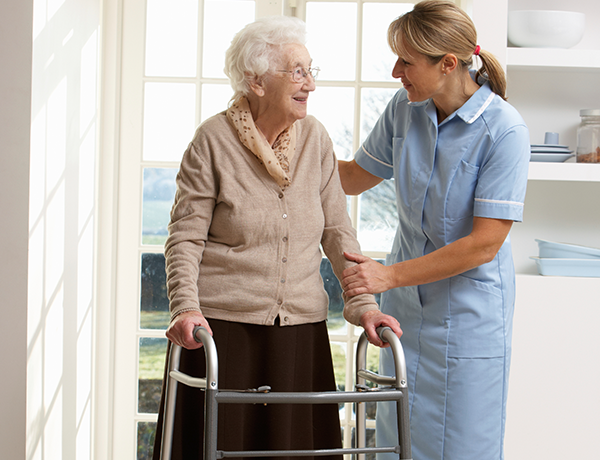 For many common diseases of the eye, a person’s risk level increases with age. Vision impairment or loss, whether gradual or sudden, can raise fresh injury hazards in everyday activities and threaten independence. As a consequence, visibility and safety are important considerations with respect to home care for seniors.
For many common diseases of the eye, a person’s risk level increases with age. Vision impairment or loss, whether gradual or sudden, can raise fresh injury hazards in everyday activities and threaten independence. As a consequence, visibility and safety are important considerations with respect to home care for seniors.
The most common global cause of blindness is cataracts, which develop slowly over time. The second-most common cause is glaucoma, a more rapid form that accounts for about 1 in 10 cases of blindness in the United States. For National Glaucoma Awareness Month this January, learn what you can do about vision loss and how in home occupational therapy can bring safety tips and quality-of-life gains aimed at longer aging in place.
Eye Health
Glaucoma comes from a change of pressure in the eye, which causes no pain and shows virtually no symptoms at all. The disease can be treated and vision loss prevented, but it is known as a ‘thief’ of sight because eyesight, once lost, cannot be regained. More than 3 million Americans are estimated to have glaucoma — but as many as half may not know it yet.
To preserve vision, early detection and treatment are key. An eye doctor can test for glaucoma, as well as assessing other common causes of age-related vision loss, such as cataracts, macular degeneration, and vision challenges caused by diabetes. Regular eye exams are the best line of defense against the effects of glaucoma and other diseases. When carefully monitored, your eye doctor can help prevent, slow, and/or treat vision loss; depending on the condition, treatments range from medicinal drops to surgical repair.
Home Solutions
For seniors with vision challenges, these changes in eyesight can gradually affect their ability to safely move about their homes or perform activities of daily living, such as bathing and dressing. Potential fall risks and hazards that were visible before can be masked by vision that appears blurry, dim, or obscured by glare — an effect known as ‘low vision.’
If low vision is affecting your independence, home health care is uniquely situated to help. A skilled in home occupational therapist can conduct a thorough home evaluation, identifying potential hazards and collaborating to find workable solutions that make tasks safer and easier. The home assessment is often a major component of senior home care, and can lead to more even and eye-friendly home lighting as well as adaptive solutions like high-contrast signage and alternative media for reading.
Because it might be difficult to read different pill bottles or tell them apart from one another, medication management is another concern when vision loss enters the picture. This is why a complete medication review is conducted at each Residential Home Health patient’s first visit, to confirm dosage and correct any pitfalls; Residential’s nurses and therapists can also offer helpful tips for taking the right pills, right on schedule. Seniors coping with severe vision loss or total blindness might also benefit from the help of a medical social worker, who serve as valuable resources to connect patients with useful services in their communities. Vision challenges may change some aspects of life, but home health care — together with regular monitoring and appropriate treatment — can preserve much of the independence and safety of aging in place.
No matter what your health challenge, Residential Home Health offers a range of services to help you work toward your health goals safely at home. Call (888)930-WELL (9355) to discuss your specific situation with a Home Care Specialist today, or click the image below to take our 60-second, 15-question Home Care Assessment.
{{cta(‘3073a01b-4a0b-41c6-91c0-460ecd8e3277’)}}

